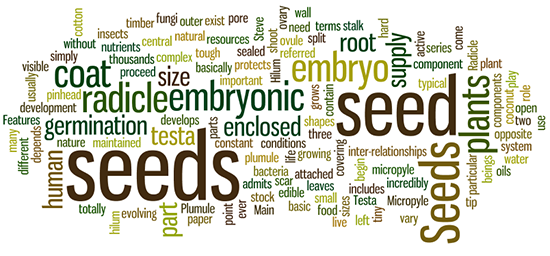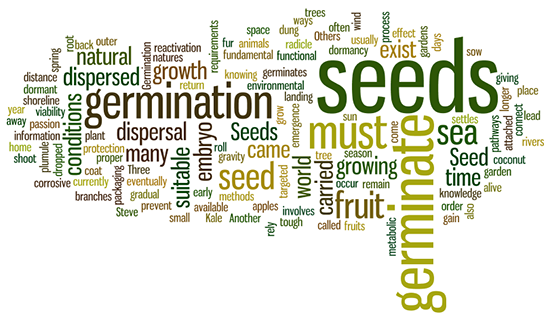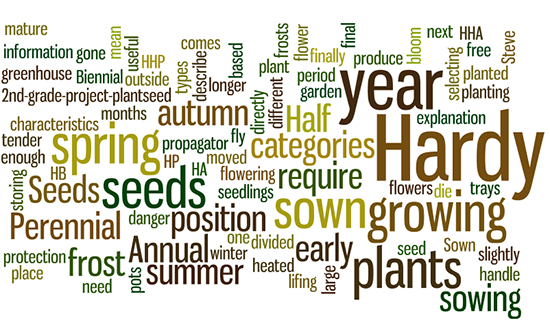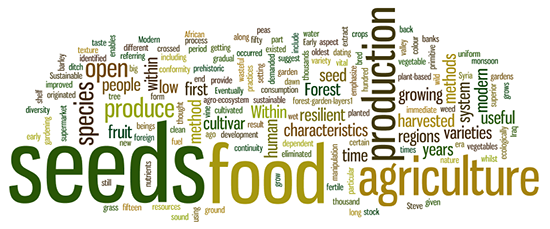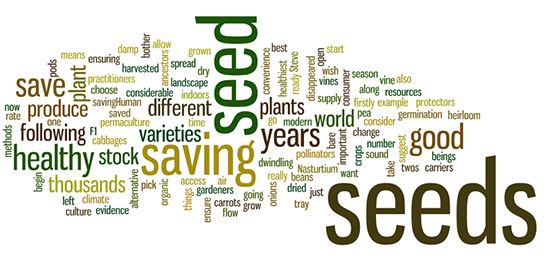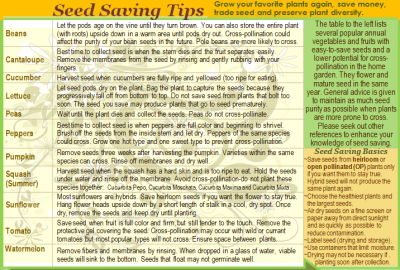Seeds are an incredibly important part of human life, without which we would simply not exist. Our food supply totally depends on seeds and seed stock, many other natural resources that we use as human beings, such as cotton, paper, timber, and edible oils, all begin their live as seeds. Seeds are part of the ever evolving constant of nature that is maintained by complex series of inter-relationships between her different component parts, of which seeds play a central role.
What are seeds?
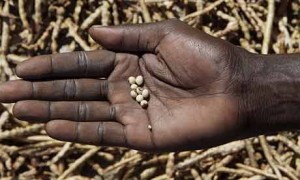 Seeds are basically very small embryonic plants that are enclosed and sealed by a covering that is referred to as the seed coat. A typical seed includes three basic components, an embryo, a supply of nutrients from the embryo and the seed coat Seeds come in all sizes and shapes and need particular conditions for their development into plants, in terms of the size of seeds, they vary from the size of a pinhead to a coconut, plants can contain a few seeds or thousands of seeds.
Seeds are basically very small embryonic plants that are enclosed and sealed by a covering that is referred to as the seed coat. A typical seed includes three basic components, an embryo, a supply of nutrients from the embryo and the seed coat Seeds come in all sizes and shapes and need particular conditions for their development into plants, in terms of the size of seeds, they vary from the size of a pinhead to a coconut, plants can contain a few seeds or thousands of seeds.
Main Features of a seed
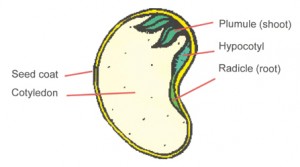 Testa – A tough, hard, outer coat, the testa protects the seed from fungi, bacteria and insects. It has to be split open by the radicle before germination can proceed
Testa – A tough, hard, outer coat, the testa protects the seed from fungi, bacteria and insects. It has to be split open by the radicle before germination can proceed
Hilum – The hilum is a scar left by the stalk which attached the ovule to the ovary wall.
Micropyle – The micropyle is a tiny pore in the testa opposite the tip of the radicle. It admits water to the embryo before active germination.
Radicle – The radicle is the embryonic root which grows and develops into the root system of the plant.
Plumule – The plumule is the embryonic shoot. In it two or more leaves are usually visible, with a growing point enclosed between them.
Seeds in action
Seed dispersal
 In the natural world, there are many ways in which seeds connect with their targeted growing space, some seeds are so small that they can be carried in the wind before landing in a suitable place, Others can be dispersed by animals in their dung or attached to their fur, Seeds are also carried and dispersed in the sea and in rivers. The sea Kale that is currently growing in our back garden at home came from seeds that had a tough outer coat giving it protection against the corrosive effect of the sea until it settles on a suitable shoreline where it will germinate and grow. Another of natures methods of seed dispersal is gravity, fruit trees such as apples, coconut and passion fruit have fruits that when dropped from their branches often roll away from the tree to gain more distance when the fruit eventually seeds and germinates.
In the natural world, there are many ways in which seeds connect with their targeted growing space, some seeds are so small that they can be carried in the wind before landing in a suitable place, Others can be dispersed by animals in their dung or attached to their fur, Seeds are also carried and dispersed in the sea and in rivers. The sea Kale that is currently growing in our back garden at home came from seeds that had a tough outer coat giving it protection against the corrosive effect of the sea until it settles on a suitable shoreline where it will germinate and grow. Another of natures methods of seed dispersal is gravity, fruit trees such as apples, coconut and passion fruit have fruits that when dropped from their branches often roll away from the tree to gain more distance when the fruit eventually seeds and germinates.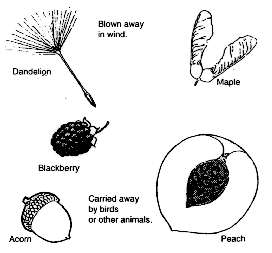
Germination
Seed germination is the process of growth of the embryo into a functional plant. It involves the reactivation of the metabolic pathways that lead to growth and the emergence of the radicle or seed root and plumule or shoot.
Three fundamental conditions must exist before germination can occur. (1) The embryo must be alive, called seed viability. (2) Any dormancy requirements that prevent germination must be over come. (3) The proper environmental conditions must exist for germination. Seeds remain dormant until it is their time in the season to germinate, in the natural world many seeds will germinate in the early spring with the gradual return of the sun and longer days. When we ourselves germinate seeds in our gardens, we rely on the knowledge of knowing which time of the year to sow the seeds in order that they germinate; this information is usually available on the packaging, in which the seeds came in.
Types of seeds
All seeds can be divided into categories which describe the plants growing characteristics; here is an explanation of what these categories mean. This is very useful information when it comes to selecting and planting a garden based on different types of plants.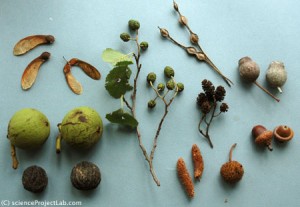
HA – Hardy Annual
These seeds can be sown directly outside during spring and they will mature, bloom and seed in summer and finally die all in one year.
HHA – Half Hardy Annual
As above these seeds need a slightly longer growing period but as they are frost tender they will require sowing in pots or trays under protection and then when the danger of frosts has gone they can be planted in their final growing position.
HB – Hardy Biennial
Seeds are sown in spring or summer and the plants are moved to their flowering position in autumn or the next spring, they will then flower 12 months after sowing.
HHP – Half Hardy Perennial
Seeds are sown early in the year in a propagator or heated greenhouse, they will then fly in the same year but will require lifing and storing in winter in a frost free place.
HP – Hardy Perennial
Sown early in the year and then plant out when the seedlings are large enough to handle, they should then produce flowers in the autumn.
Seeds in human development
As a foraged and harvested food from nature
Before the development of agriculture, seeds were ground to extract their nutrients, grindstones dating back a hundred and fifty thousand years suggest that seeds were a part of the diet in African people during this time. In this period seeds from grasses were harvested for human consumption, both in Africa and amongst the Aboriginal people of Australia, including millet, ditch weed and water grass seeds.
Forest gardening
A plant-based food production system, is thought to be the world’s oldest agro-ecosystem. Forest gardens originated in prehistoric times along jungle-clad river banks and in the wet foothills of monsoon regions. In the gradual process of a family improving their immediate environment, useful tree and vine species were identified, protected and improved whilst undesirable species were eliminated. Eventually superior foreign species were selected and incorporated into the family’s garden. 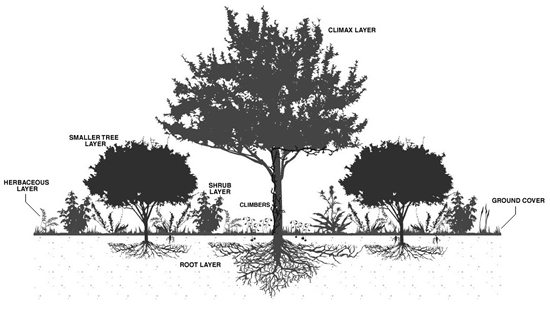
Early agriculture
We have been using seeds to grow our own food ever since the dawn of agriculture between ten and fifteen thousands years ago. The first seeds cultivated by human beings occurred in the fertile valley that existed between Iraq, Syria and Jordan. The first seeds that were used in this early era of agriculture were wheat in its primitive form, known as Emmer, which still grows wild in these regions. Other crops that came from seed which we planted at the time, include lentils, peas, barley and linseed.
Modern agriculture
In modern agriculture seeds are very regulated and uniform; this reflects the type of end result produce that is demanded by the big supermarkets. Over generations, food seeds have been bred to produce certain characteristics such as taste, texture, shape and colour, it is this manipulation of characteristics within seeds then enables the conformity of fruit and vegetables on the modern supermarket shelf.
Sustainable food production
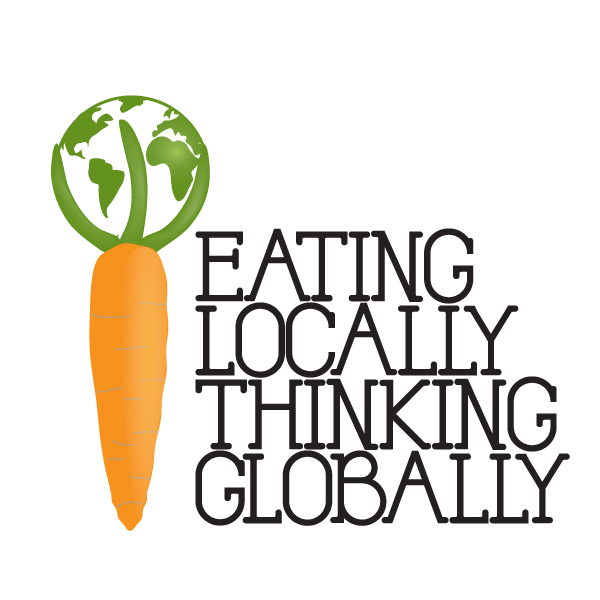 By sustainable food production I am referring to a variety of different methods and practices that emphasize diversity and clean low energy methods of growing food and other resources within a local setting. Within this method of growing seeds is a particular important aspect in getting from wasteful fossil fuel dependent A to an ecologically sound and resilient B. Within this method of food production open cultivar varieties are useful because they provide a continuity of seed stock which is vital in a long term resilient low impact food production system, these open cultivar seeds they can also be crossed with other open pollinators to produce new varieties of a given fruit or vegetable.
By sustainable food production I am referring to a variety of different methods and practices that emphasize diversity and clean low energy methods of growing food and other resources within a local setting. Within this method of growing seeds is a particular important aspect in getting from wasteful fossil fuel dependent A to an ecologically sound and resilient B. Within this method of food production open cultivar varieties are useful because they provide a continuity of seed stock which is vital in a long term resilient low impact food production system, these open cultivar seeds they can also be crossed with other open pollinators to produce new varieties of a given fruit or vegetable.
Saving seeds
Human beings have saved seeds for thousands of years as a means of ensuring a good supply of seed stock for the following years crops. In the modern world of convenience and consumer culture seed saving has disappeared into the alternative landscape, where organic gardeners 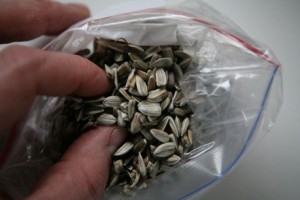 and permaculture practitioners are now the carriers and protectors of our seed stock. In a world of dwindling resources and climate change it is important that begin to start saving seeds again, just as our ancestors did for thousands of years.
and permaculture practitioners are now the carriers and protectors of our seed stock. In a world of dwindling resources and climate change it is important that begin to start saving seeds again, just as our ancestors did for thousands of years.
How to save seeds
If you wish to save seeds from the produce that you have grown there are a number of things to consider, firstly, don’t bother saving F1 seed varieties, heirloom varieties (open pollinators) are best. There is also sound evidence to suggest that when you choose a plant that you are going to allow to go to seed that you pick a healthy one, as healthy plants produce healthy seeds, and if you are saving seeds then you really want the healthiest seeds that you can to ensure a good germination rate in the following season. There are different methods for saving different seeds, for example to save beans and pea seeds, the pods are left on the vine to dry out before they are harvested and dried again indoors spread out on a tray where there is access to good air flow and no damp. Other seeds such as those of the Nasturtium g
row along the vines of the plant in twos. Some plants such onions and cabbages and carrots can take considerable time before they are ready to bare seed. Steve

